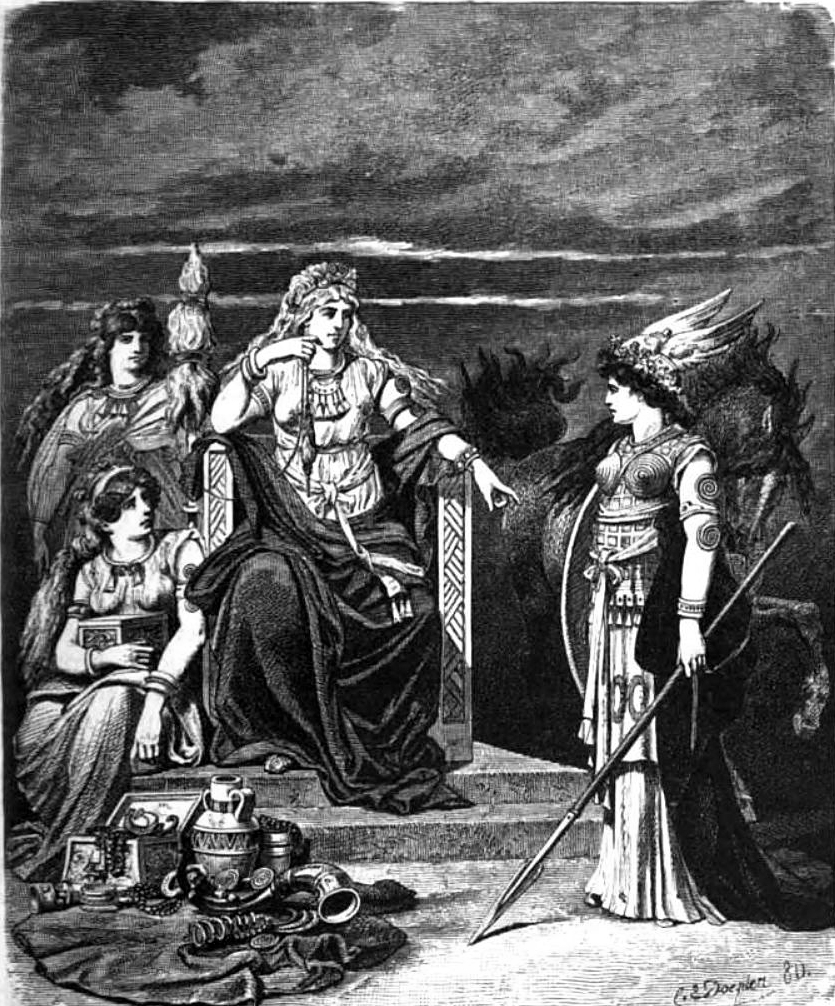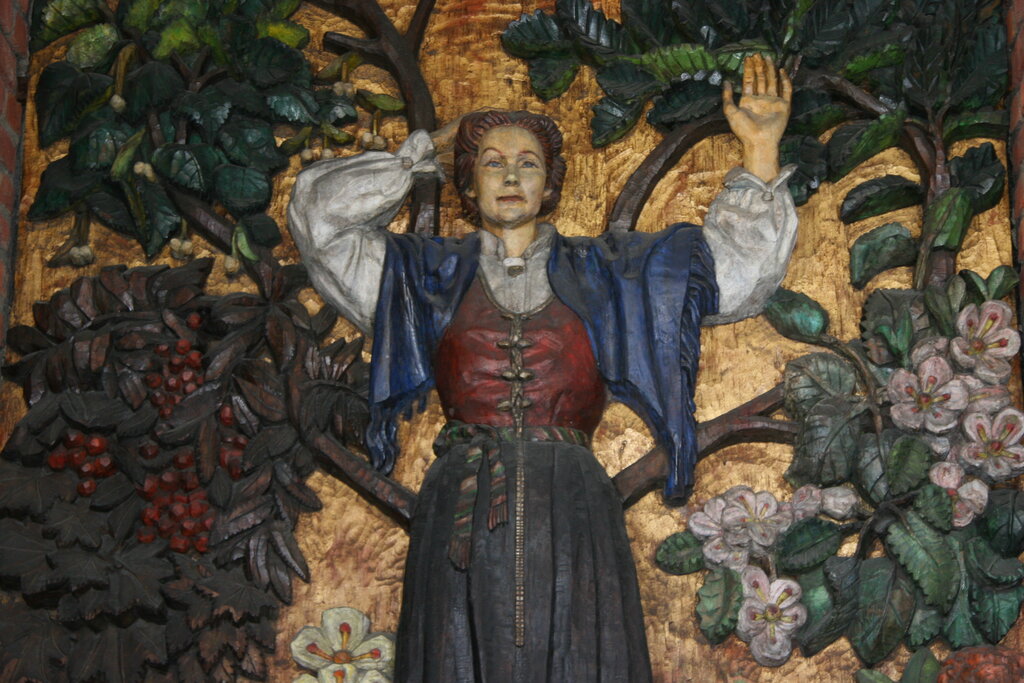The goddess Frigg has twelve handmaidens, and Hlin is one of them. Frigg's handmaidens tend to the goddess's wishes, and Hlin shares a vital role in death and danger.
The role that Hlin played within Norse mythology is contested amongst scholars. Most agree that she was the goddess of solace from mourning, while others believe she was a savior or a protector. When Frigg wanted to save the weak, like children or women, she would send Hlin to save them.
To make matters even more complicated, some scholars believe that the translation of Hlin in the Prose Edda got it wrong and that Hlin and Frigg are the same person. But more on that a little later.
Overall, the history and accounts of Norse goddesses only tell us a little. Old Norse sagas and kennings translations focus on the gods like Odin, Thor, Heimdall, Baldr, Tyr, and Loki (because Christian men often translated them).
So, let’s dive into what we know about this elusive goddess Hlin.
What Is Hlin The Goddess Of?
The most pervasive theory is that Hlin is the goddess of solace from mourning.
Praying to Hlin offers those that suffered a devastating personal loss the strength to go on. However, some also feel that she is the goddess of protection that helps marginalized people seek safety.
She may be the goddess of solace in mourning, the goddess of protection, or both.
Goddess of Solance from Mourning
She comes to those grieving wearing a gray veil and helps them through mourning. In grief, it’s easy to get lost in sadness as you navigate through various stages, and Hlin helps mourners navigate the troubled road.
If Frigg hears your prayers for help through grief, she will send her handmaiden Hlin for help.
Goddess of Protection
Some scholars translate the Prose Edda and find Hlin an Æsir protectress. Her name in Old Norse means help in English, after all. When Frigg determines that someone is in trouble, she sends her handmaiden Hlin into dangerous circumstances to protect them.
Hlin isn’t found on the battlefield helping Vikings, but rather small children and women from harm. Thor helps Vikings from danger on the battlefield, and Hlin helps women and children.
Frigg’s 12 Handmaidens
Hlin was just one of Frigg’s twelve handmaidens. Other handmaidens included:
- Eir
- Fulla
- Gefjon
- Gna
- Lofn
- Saga
- Sjofn
- Syn
- Snotra
- Var
- Vor
Frigg and her handmaidens pertain to the Ásynjur court, which runs parallel to the Æsir court ruled by Odin. These handmaidens never marry and only hold allegiance to Frigg.
Don’t let the title of handmaiden fool you into thinking they aren’t powerful. They earn the title of handmaiden because they hold allegiance only to their queen.
These handmaidens are powerful goddesses in their own right and are just as powerful as the Æsir gods.

Hlin: Another Name for Frigg?
Some modern scholars believe Frigg and Hlin to be the same. Much of our understanding of the old Norse gods lies in the Prose Edda, written by Snorri Sturluson. This means that much that we understand lies in one man’s interpretation. When Snorri wrote the Prose Edda, some believe he misunderstood the translation for Hlin as another name for Frigg.
Norse Germanic scholars like Andy Orchard and Rudolf Simek believe that Snorri got it wrong. When he translated the passage in the Völuspá, he misunderstood that Hlin was another name for Frigg. And the understanding stuck around.
However, some scholars believe that Hlin was a goddess in her own right. Joseph Hopkins, for instance, dismisses the notion that they were the same person. The idea that they were the same lies on the supposition that Snorri got it wrong, but there is little evidence to indicate that he was.
Hlin Attestations
One of the most notable attestations of Hlin lies in Snorri Sturluson’s Prose Edda in the Völuspá. This passage references Hlin and the impending death of Odin, and she is mentioned by name. Additionally, Hlin is listed in the Skáldskaparmál within a list of Ásynjur (or female Æsir) names, and in the Gylfaginning, she is listed with other Æsir goddesses.
The most controversial passages about Hlin, however, lie in the Gylfaginning. In this passage, Snorri describes Hlin as a goddess protecting those Frigg wants to save from immediate danger.
This passage is highly contested because it utilizes the word hleina, which possesses more than one translation. It could be used as a proper noun (as Hlin) or a verb or even translated to mean a maple tree. Much of the controversy regarding Hlin’s existence boils down to this passage.
While Hlin isn’t mentioned often in the Prose Edda, she appears in Nordic kennings and Skaldic poetry. More often than not, Hlin is referenced in old kennings that are aimed at women.
Kennings such as Hlín hringa, Hlín goðvefjar, arm-Hlín mentioned this goddess quite frequently. In old kennings, her name is often shortened to Lin.
Why Is There So Little Known About Hlin?
Much of what we understand about Norse mythology was translated by Christian men. When Snorri, for instance, translated surviving Skaldic poetry, he put more of an emphasis on the Æsir gods rather than the Ásynjur goddesses (whether intentional or not).
The controversy surrounding Hlin is because there are few references to Frigg and her handmaidens in surviving Norse texts.

